We’ve been having a really interesting time working with our friends at Hoodline, a site that was my go-to for local San Francisco news even before we started working with them about a month ago. Hoodline is quickly becoming a go-to location for really local news, like the armed standoff that took over two blocks near our Mission studio last week (for which I was the tipster that broke the story, check it out). So we were really glad when they asked us to help them tell stories with the amazing data that they’re collecting about the City. Our first public collaboration working with Marcos Voltolini and the team at Hoodline to crunch the data went live this morning, and is about retail vacancies in the Castro.
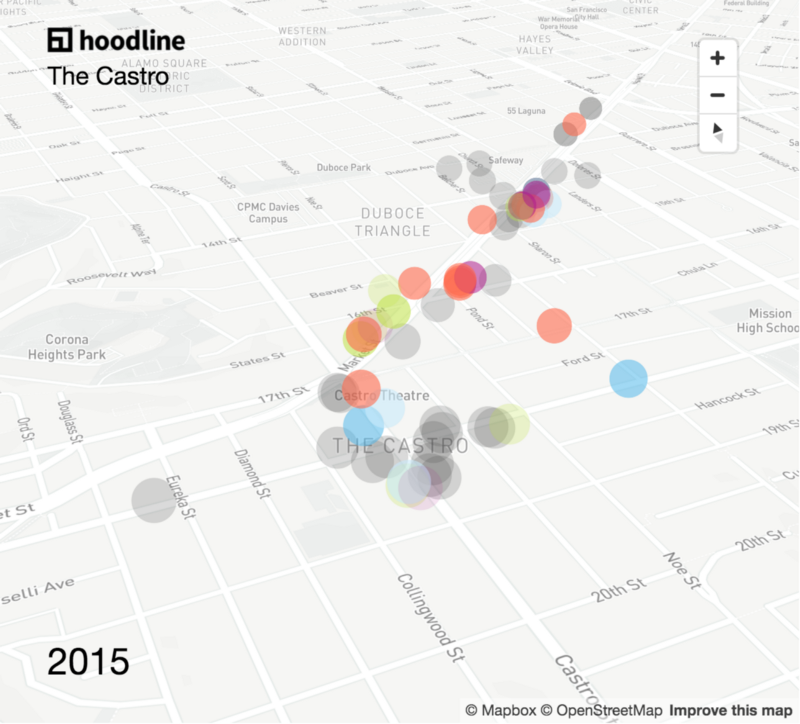
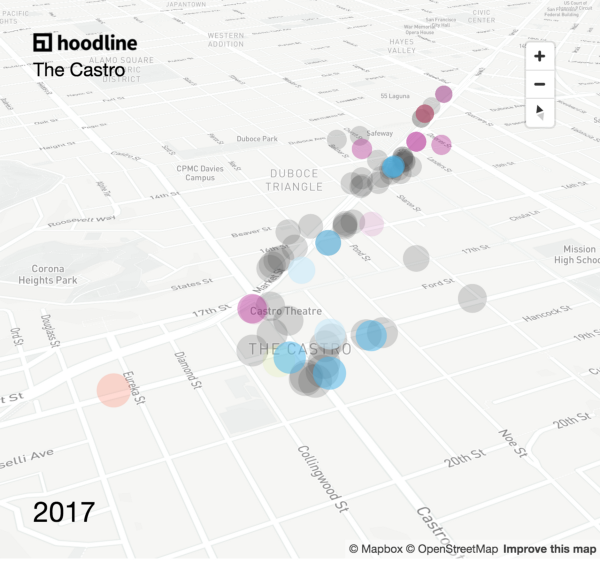
“Unfortunately, there is very little local retail data available regarding neighborhood vacancies,” and so even though the Castro CBD compiled a list in 2015, there wasn’t a comprehensive list of vacancies available anywhere. So Hoodline went out and walked the neighborhood, and “defined any Castro property as vacant if we couldn’t walk in the door and purchase a good, service, or experience.” It was great to see someone else take the initiative to pound the payment and count things in a city by hand; this is the same approach we took with The City from the Valley, where we followed Google buses around San Francisco and pulled the results together into a series of maps:
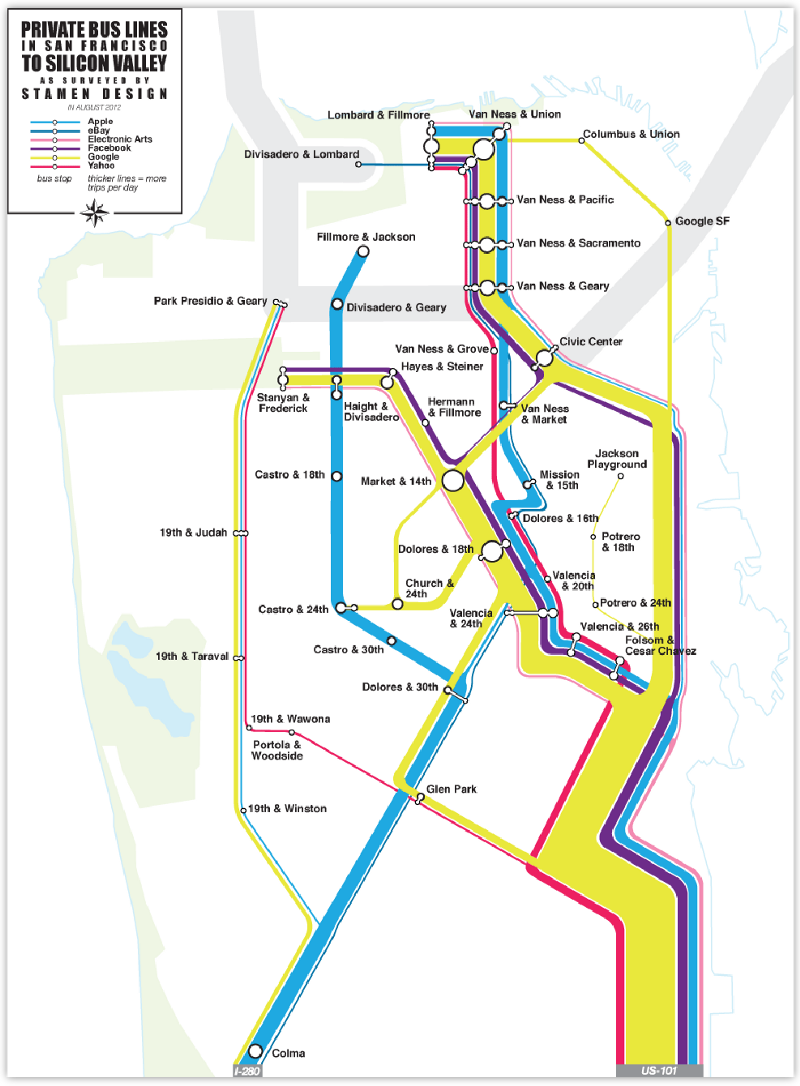
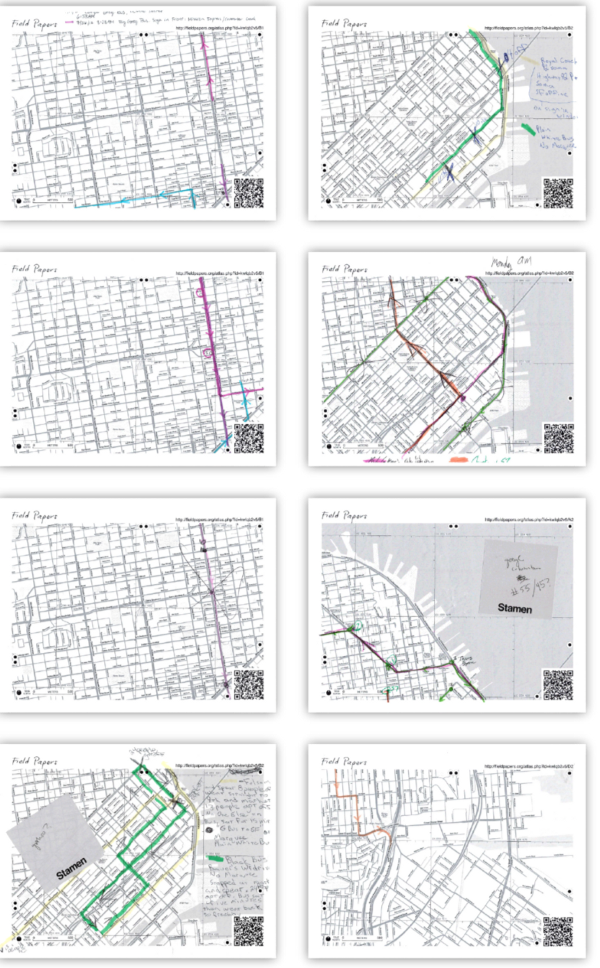
Hoodline’s taken this one step farther by providing the underlying data for download, something we were never able to do. With the 2015 study as a baseline, they were able to provide a comparative analysis of what the neighborhood was a few years ago, and what’s in store for the future. We can also take a look at the Castro’s mix of businesses relative to other retain corridors, like the Haight and Valencia Street.
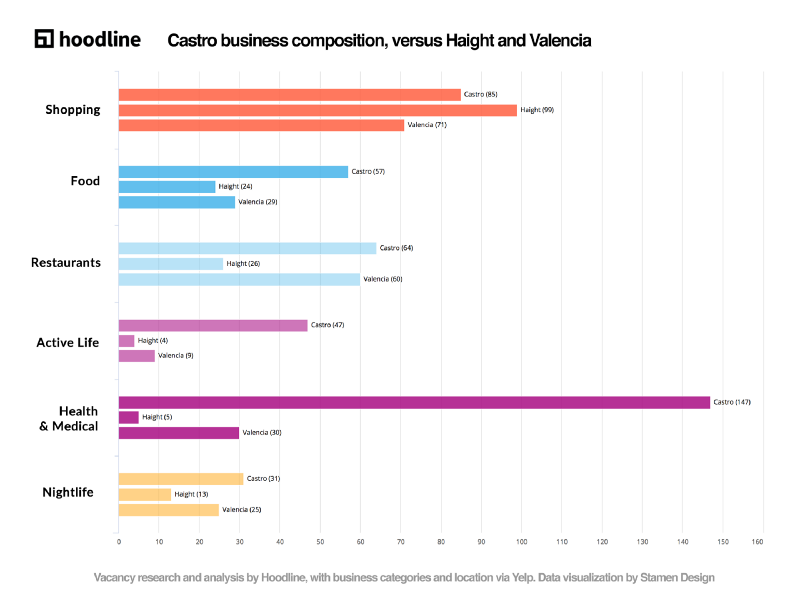
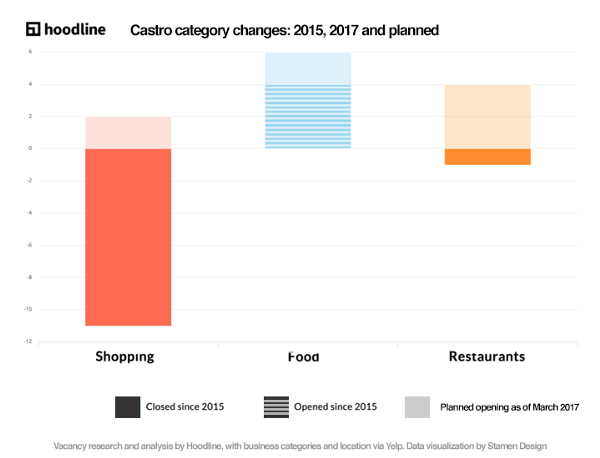
A few things are immediately clear: shopping is waaaay down in the Castro even from 2015. Local retail, it seems, has a hard time competing with the internet, because “People treat local stores like showrooms, and then they go home and order things online…The businesses that are thriving in this neighborhood are services, food, and the bars.” And relative to Valencia and Haight, the Castro has a lot more Active Life and Health & Medical outlets. You can read more about Hoodline’s findings in the article, and if you’ve got your own ideas about what’s happening to and in this iconic San Francisco neighborhood, that’s what the comments are for. Many thanks to Dan McCarey for his help on this project.
Look for more like this as we continue our analysis with Hoodline, and check out some of Hoodline’s previous dataviz projects.
